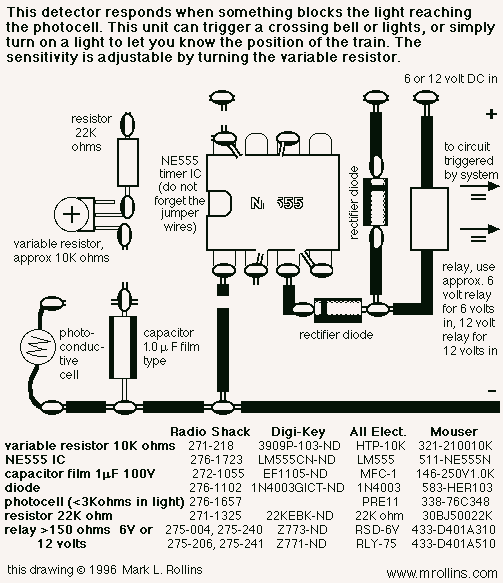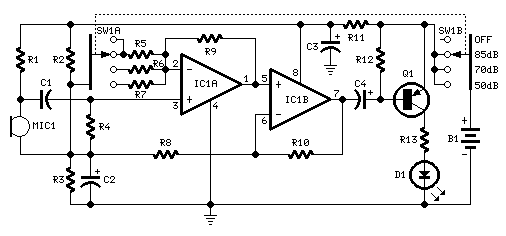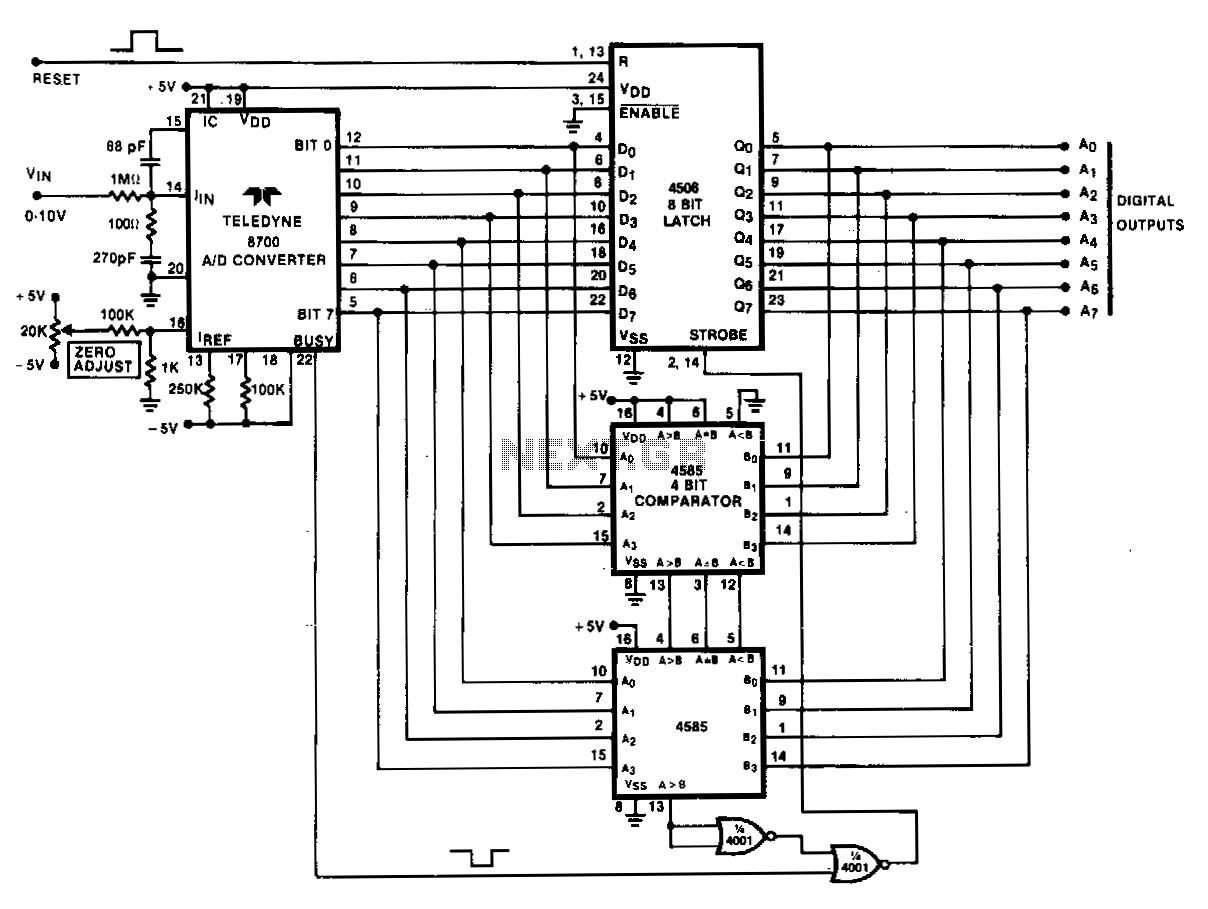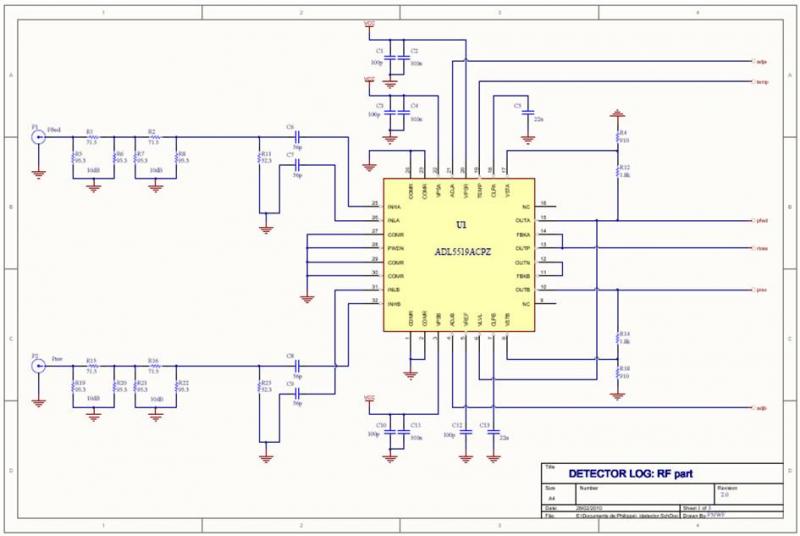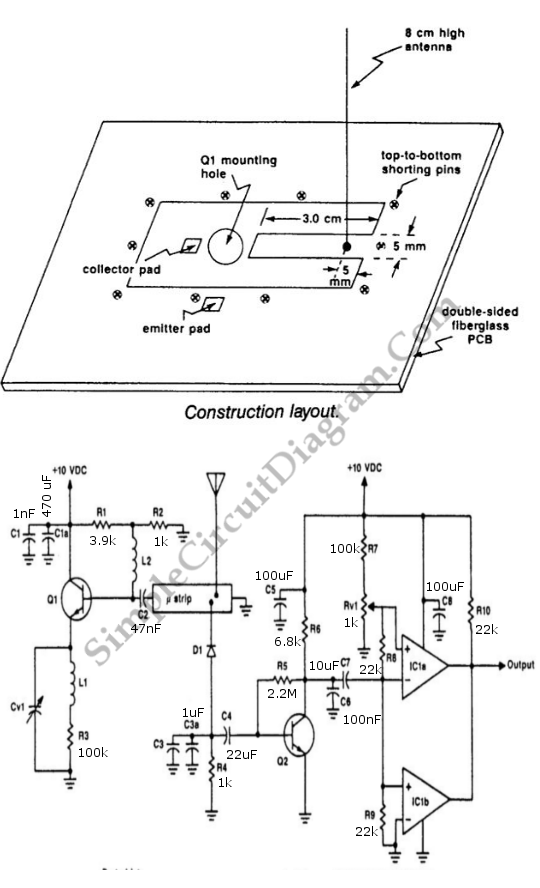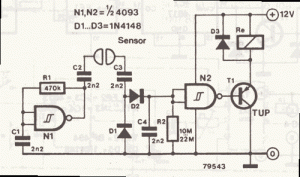
True rms detector
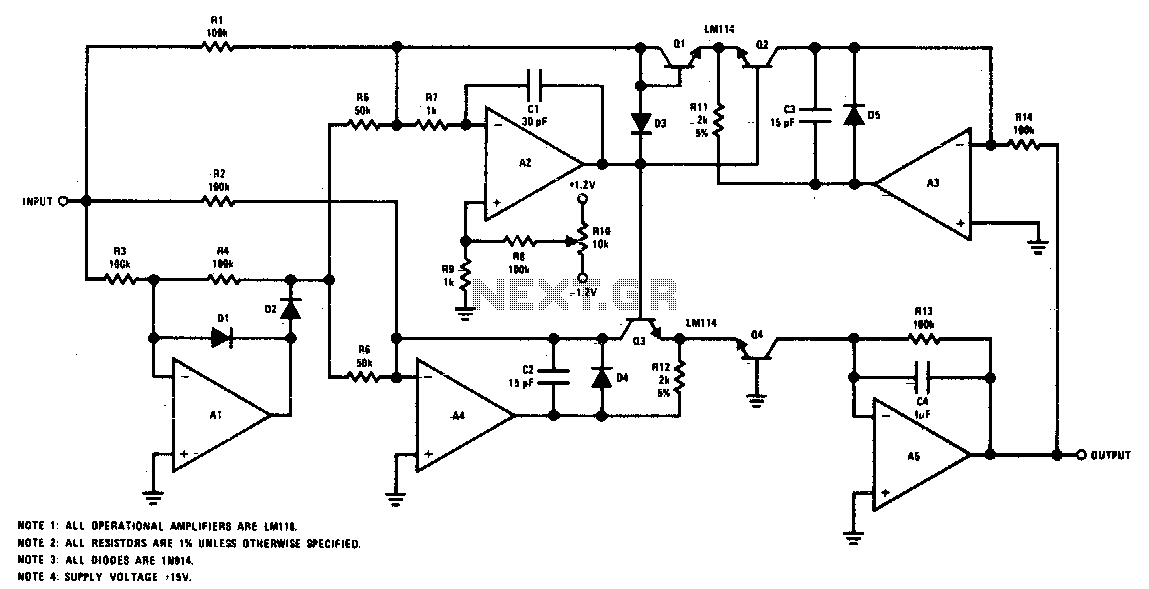
The circuit provides a DC output that corresponds to the RMS value of the input. The accuracy is typically 2% for a 20 Vpp input signal within the frequency range of 50 Hz to 100 kHz, although it remains functional up to approximately 500 kHz. The lower frequency limit is determined by the size of the filter capacitor. Additionally, because the input is DC coupled, the circuit can accurately deliver the true RMS equivalent of both DC and AC signals.
The described circuit functions as a true RMS converter, which is essential for measuring the effective value of varying AC signals in a DC format. The circuit's design typically incorporates a precision rectifier to ensure accurate representation of the input signal's RMS value. This rectifier is often followed by a low-pass filter, which smooths the output to provide a stable DC voltage that corresponds to the RMS value.
In terms of components, the circuit generally includes operational amplifiers configured for rectification, precision resistors for maintaining accuracy, and a filter capacitor that plays a crucial role in determining the lower frequency response. The size of the filter capacitor directly influences the cutoff frequency of the low-pass filter, with larger capacitors allowing for lower frequency signals to be processed effectively.
The operational amplifiers used in the circuit must have a high slew rate and bandwidth to accommodate the specified frequency range, especially since the circuit is capable of handling frequencies up to 500 kHz. Additionally, the choice of precision resistors is critical to maintain the stated accuracy of 2%, ensuring minimal error in the output voltage.
Overall, this circuit is particularly useful in applications where accurate RMS measurements of AC signals are required, such as in power monitoring systems, audio equipment, and various electronic testing environments. Its ability to handle both AC and DC inputs makes it versatile for a range of electronic applications.The circuit will provide a dc output equal to the rms value of the input. Accuracy is typically 2% for a 20 Vpp input signal from 50 Hz to 100 kHz, although it"s usable to about 500 kHz. The lower frequency is limited by the size of the filter capacitor Since the input is dc coupled, it can provide the true rms equivalent of a dc and ac signal.
The described circuit functions as a true RMS converter, which is essential for measuring the effective value of varying AC signals in a DC format. The circuit's design typically incorporates a precision rectifier to ensure accurate representation of the input signal's RMS value. This rectifier is often followed by a low-pass filter, which smooths the output to provide a stable DC voltage that corresponds to the RMS value.
In terms of components, the circuit generally includes operational amplifiers configured for rectification, precision resistors for maintaining accuracy, and a filter capacitor that plays a crucial role in determining the lower frequency response. The size of the filter capacitor directly influences the cutoff frequency of the low-pass filter, with larger capacitors allowing for lower frequency signals to be processed effectively.
The operational amplifiers used in the circuit must have a high slew rate and bandwidth to accommodate the specified frequency range, especially since the circuit is capable of handling frequencies up to 500 kHz. Additionally, the choice of precision resistors is critical to maintain the stated accuracy of 2%, ensuring minimal error in the output voltage.
Overall, this circuit is particularly useful in applications where accurate RMS measurements of AC signals are required, such as in power monitoring systems, audio equipment, and various electronic testing environments. Its ability to handle both AC and DC inputs makes it versatile for a range of electronic applications.The circuit will provide a dc output equal to the rms value of the input. Accuracy is typically 2% for a 20 Vpp input signal from 50 Hz to 100 kHz, although it"s usable to about 500 kHz. The lower frequency is limited by the size of the filter capacitor Since the input is dc coupled, it can provide the true rms equivalent of a dc and ac signal.
